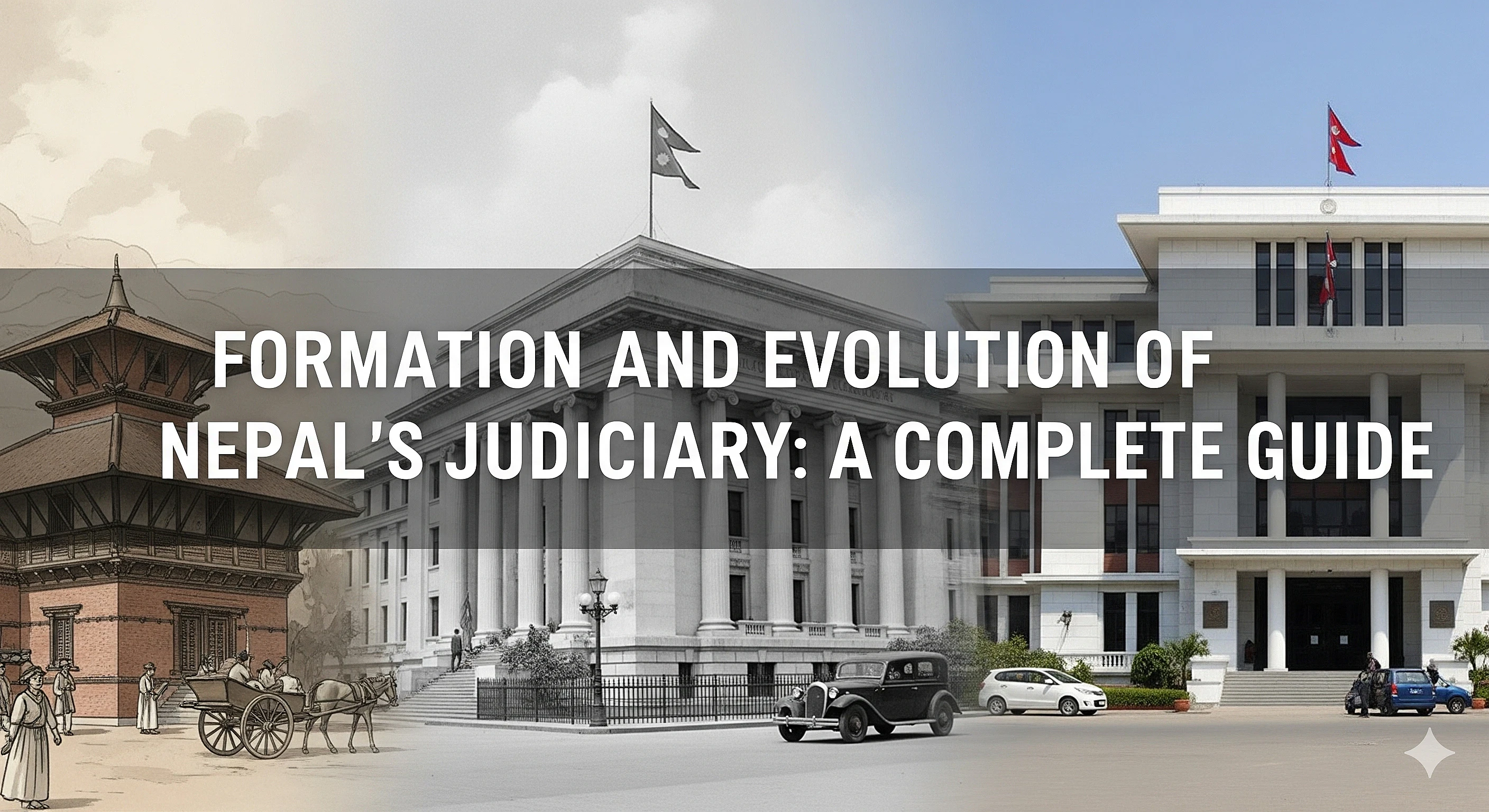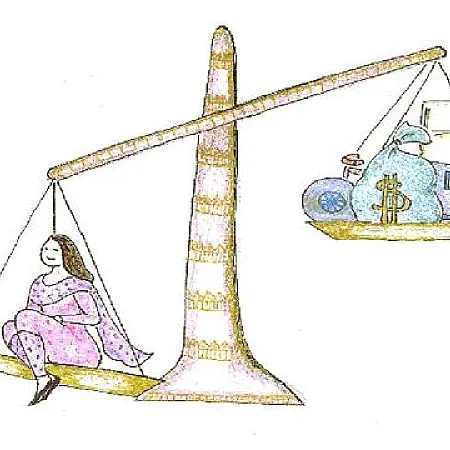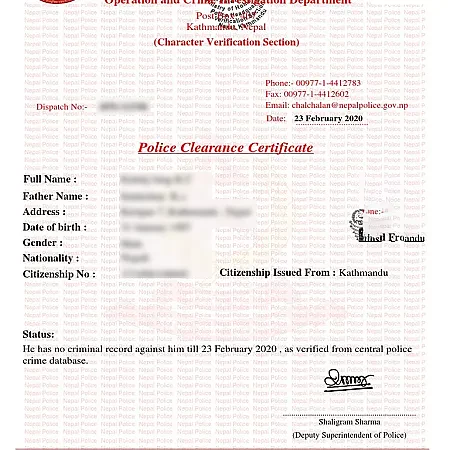Nepal's judicial evolution reflects the nation's complex political journey from monarchy to republic. Understanding the formation of courts in Nepal provides crucial insights into how the country's legal framework Nepal has developed over decades of constitutional changes.
Historical Origins of Nepal's Legal System
The foundations of the Nepal judiciary system trace back to ancient times when various kingdoms maintained distinct judicial bodies. Traditional courts like the Raj Sabha (Royal Council) served as the highest judicial authority in different regions.
The modern judicial framework began taking shape with Nepal's first constitution in 1948, but the real transformation started with the Supreme Court Act of 1956 under the Interim Constitution of 1951. This marked the beginning of Nepal's structured legal system that would evolve through multiple constitutional changes.
The 1951 Constitutional Framework and Early Judicial Development
The Interim Constitution of 1951 established the groundwork for Nepal's modern judiciary. This constitution ended the century-long Rana oligarchy and introduced democratic principles. While limited in scope, it created the foundation for establishing formal courts and legal procedures.
Key Features of the 1951 Legal Framework
- Introduction of constitutional monarchy
- Establishment of basic judicial principles
- Recognition of fundamental rights (though limited)
- Creation of legal basis for court formation
Formation of the Supreme Court Nepal (1956)
The Supreme Court was formed in 2013 BS (1956 AD) and was officially established on May 21, 1956. This milestone created Nepal's apex judicial institution and marked a significant step in judicial history Nepal.
The first Chief Justice of Nepal was Hari Prasad Pradhan, who played a crucial role in establishing judicial procedures and court operations. The Supreme Court sits in the heart of Kathmandu at Ram Shah Path, symbolizing its central role in Nepal's legal system.
Early Supreme Court Structure
- Establishment of Chief Justice position
- Creation of judicial procedures
- Development of court administration
- Introduction of case management systems
The 1990 Constitution: Democratic Transformation
The 1990 Constitution brought revolutionary changes to the Nepal judiciary system. It expanded personal freedoms, ended the ban on political parties, and established a Council of Ministers, led by a Prime Minister, to aid and advise the King.
Judicial Reforms Under the 1990 Constitution
- Enhanced judicial independence
- Strengthened fundamental rights protection
- Improved court procedures
- Expanded judicial review powers
This Constitution became the fundamental law of Nepal, declaring that all laws inconsistent with it shall, to the extent of such inconsistency, be void. This principle strengthened judicial authority in constitutional interpretation.
Impact of Political Changes on Judiciary (1996-2006)
In 1996, a Communist Maoist guerrilla movement began in the countryside, which destabilized the political system. This period significantly impacted judicial functioning, creating challenges for court operations and legal proceedings across the country.
Despite political turmoil, the judiciary maintained its essential functions, demonstrating the resilience of Nepal's legal institutions during times of crisis.
The 2007 Interim Constitution: Transitional Period
The 2007 Interim Constitution marked Nepal's transition from monarchy to republic. This constitution established the framework for the judicial history Nepal would follow during the constitutional assembly period.
Key Judicial Provisions in 2007 Constitution
- Continued Supreme Court authority
- Maintained three-tier court system
- Preserved judicial independence
- Established transitional legal framework
The 2015 Constitution: Modern Judicial Framework
Nepal's new Constitution was promulgated on 20 September 2015. The Constitution with 308 Articles, 35 parts and nine schedules is the seventh constitution in the history of Nepal since 1948.
The 2015 Constitution brought comprehensive reforms to the legal system Nepal operates under today, establishing a federal structure with corresponding judicial arrangements.
Current Three-Tier Court System
Supreme Court of Nepal
The Supreme Court is composed of a Chief Justice and twenty Judges (Justice). Judges of the Supreme Court hold their office till the age of sixty-five.
Key Functions:
- Constitutional interpretation
- Final appellate jurisdiction
- Judicial review of laws
- Administrative supervision of lower courts
High Courts (Provincial Level)
- Regional appellate jurisdiction
- Administrative oversight of district courts
- Specialized case handling
- Constitutional matters at provincial level
District Courts (Local Level)
- Primary trial jurisdiction
- Civil and criminal cases
- Local dispute resolution
- First instance proceedings
Specialized Courts and Tribunals
Article 152 of the 2015 Constitution of Nepal provides for the formation of specialized courts. Specialized courts, judicial bodies or tribunals may be formed to try and settle specific types and nature of cases other than those mentioned in Article 127, as provided for in the Federal law.
Types of Specialized Courts
- Labor Courts
- Revenue Courts
- Debt Recovery Courts
- Administrative Courts
- Special Courts for corruption cases
Constitutional Principles Governing Judiciary
The Constitution establishes commitment to competitive multi-party democratic governance system, civil liberties, fundamental rights, human rights, adult franchise, periodic elections, complete press freedom, independent, impartial and competent judiciary and the concept of rule of law.
Core Judicial Principles
- Independence of judiciary
- Impartial justice delivery
- Rule of law supremacy
- Access to justice
- Judicial accountability
Challenges and Reforms in Modern Era
The formation of courts in Nepal continues evolving to meet contemporary challenges:
Administrative Efficiency
- Case backlog management
- Technology integration
- Human resource development
- Infrastructure improvement
Legal System Modernization
- Procedural reforms
- Alternative dispute resolution
- Digital case management
- Legal aid expansion
Educational Significance for Law Students
Understanding Nepal's judicial evolution is essential for law students preparing for examinations. Key study areas include:
- Constitutional development timeline
- Supreme Court establishment and evolution
- Three-tier court system structure
- Specialized court jurisdiction
- Judicial independence principles
- Constitutional interpretation methods
Exam-Relevant Topics
- Historical development of Nepal judiciary system
- Constitutional provisions for courts
- Supreme Court Nepal jurisdiction and powers
- Appointment and tenure of judges
- Judicial review mechanisms
Current Structure and Future Prospects
Today's Nepal judiciary system operates under federal principles while maintaining unified judicial administration. The Supreme Court continues its role as the guardian of the Constitution and final arbiter of justice.
Ongoing Developments
- Federal court system implementation
- Judicial capacity building programs
- Technology adoption initiatives
- Access to justice improvements
- International judicial cooperation
Conclusion
The formation and evolution of Nepal's judiciary reflects the country's democratic journey and commitment to rule of law. From the establishment of the Supreme Court Nepal in 1956 to the comprehensive judicial framework under the 2015 Constitution, Nepal's legal system Nepal has demonstrated remarkable adaptation to political and social changes.
For law students, understanding this judicial history Nepal provides essential context for contemporary legal practice. For legal professionals and the general public, this evolution showcases how democratic institutions can develop and strengthen over time, ensuring justice and constitutional governance for all citizens.
The ongoing development of Nepal judiciary system continues to address modern challenges while preserving the fundamental principles of justice, independence, and rule of law that form the cornerstone of Nepal's legal framework.
This comprehensive guide serves law students preparing for examinations, legal professionals seeking historical context, and citizens interested in understanding Nepal's judicial development.








-thumb.webp)
-thumb.webp)
